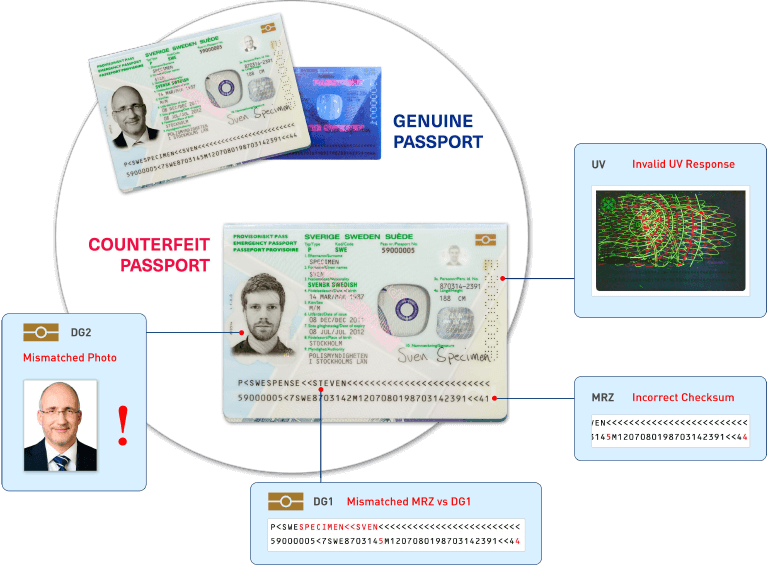How Do ID Document Readers and Passport Scanners Work and What Can They Read?
The title of this post looks like a simple two-part rhetorical question, but it is not. The answers to these questions are crucial to the function of businesses, governments and other organizations across the globe. So, to recommend the appropriate device to your customers, it is essential to have a fundamental understanding of the technology and functionality of ID document readers and passport scanners.
Diverse ID Documents
Today’s ID card readers, document readers and passport scanners can process thousands of document types and formats from around the world. They read and extract a wide range of biographical data contained within the visual inspection zones (VIZ), machine-readable zones (MRZ), biometric chips, RFID chips or barcodes. The most common ID types that they read electronically include:
- ISO 18013 driver’s licenses
- ICAO 9303 passports
- National ID cards
- Machine-readable visas (MRVs)
- Military and government IDs
- Voter ID cards
Extracting Data From the ID Document
The ID document verification process typically works as follows, but will depend on the type of ID being scanned:
- It starts with automatic detection of the ID document on the scanner, triggering…
- The capture of hi-res images using multiple wavelengths of light to expose visible and invisible security features, while…
- Radio-frequency Identification (RFID) chip data is being captured, and…
- Optical character recognition (OCR) technology extracts printed text, and…
- Linear and 2D Barcodes and QR codes are decoded to pull encoded identification details, for…
- Advanced software algorithms to digitally interrogate the ID document.
Examining Document Data for ID Verification
The data extracted from the ID document is transferred to systems where specialized software performs authentication checks on the document’s data and security features.
The algorithmic analysis includes various processes, one of which is comparing the face images on the data page and the data chip in Data Group 2 (DG2). Checks like B900 and UV dull assessments also verify authenticity.
If required, the captured data can also be quickly transferred to law enforcement agencies for cross-checking.

As complex as it sounds, this electronic analysis automates ID verification far faster and with greater accuracy than manual inspections.
For an ID scanner to be able to read and extract the information and for software to analyze it — all in a few seconds — is an incredible feat of innovation. This exemplifies how automated ID reading removes friction and delays and where HID ID document readers add value. Our devices swiftly read, extract and transfer data from multiple ID and passport documents with a single swipe or scan.
Equipping You to Advise on ID Reader Tech
Knowing how ID document readers and passport scanners work and what they read enables you to recommend the best ID document verification solutions to meet your customers’ needs. HID’s advanced technology creates a win-win for everyone because it enables rapid, accurate ID verification, which simplifies the transaction process and facilitates smooth journeys.
Arthur Tay is a seasoned product marketing manager for the Access-IS business unit, part of HID’s Extended Access Technologies business area. He has several years of technical expertise in successfully managing the entire product lifecycle from ideation through development, launch and completion phases. In the past, he has worked as a global product manager for well-known brands, including Motorola, Hewlett-Packard, Vertu and others. He holds a Master of Business Administration degree from the National University of Singapore and executive leadership training from Wharton School.
